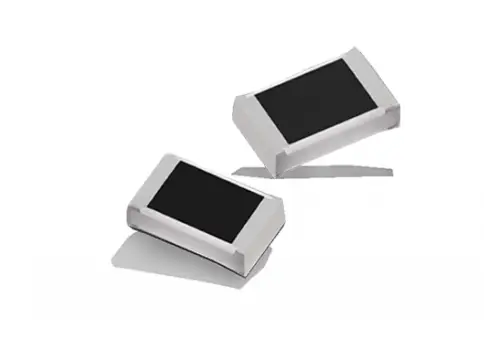

Panasonic SMD/Chip Resistors
Catalog
DescriptionFeaturesTypes of SMD/Chip ResistorsApplicationsSelection TipsRecommended Brands and ProductsConclusionFrequently Asked Questions (FAQs)Related ArticlesDescription
SMD/Chip Resistors, also known as Surface-Mounted Device Resistors, are electronic components designed for surface-mount technology. They are widely used in modern electronics due to their compact size and ease of integration.

SMD/Chip Resistors
Features
- High-Power and Compact Design: Panasonic’s ERJ-P Series delivers high power in smaller case sizes with excellent heat dissipation and trimming patterns.
- AEC-Q200 Qualification: Ensures reliability for automotive-grade applications.
- Wide Operating Temperature Range: From -55°C to 175°C, depending on the series.
- High Accuracy and Stability: Thin Film Resistors feature up to 10ppm and 0.05% precision.
- Anti-Surge and High-Voltage Handling: Enhanced performance under demanding conditions.
- Wide Terminal Options: Improved solder joint reliability and reduced risk of thermal expansion issues.
Types of SMD/Chip Resistors
High-Power / Anti-Surge / High-Voltage Resistors
- Series: ERJ-P
- Applications: Automotive, industrial equipment, and power management.
- Advantages: Smaller size, higher solder joint reliability, and better power handling compared to conventional Thick Film Resistors.
Current Sense Resistors
- Series: ERJ-B1, B2, xB, xBW, xCW
- Specifications: Power ratings up to 2W, low resistance (5mΩ to 10Ω).
- Applications: Power monitoring, circuit protection, and energy metering.
Thin Film / Metal Film Chip Resistors
- Specifications: High precision (10ppm, 0.05%), low current noise, excellent linearity.
- Applications: Automotive, appliances, industrial systems requiring long-term reliability.
- Compliance: IEC 60115-8, JIS C 5201-8, EIAJ RC-2133B, AEC-Q200 certified.
Thick Film Chip Resistors
- Types: Conventional and Precision.
- Case Sizes: From 01005 to 2512.
- Applications: General-purpose circuits and precision electronics.
Resistor Networks / Arrays
- Series: EXB
- Configurations: 2, 4, or 8 resistors per package.
- Case Sizes: 0201 to 0805.
- Applications: Pull-up/down circuits and space-efficient designs.
Anti-Sulfur Resistors
- Specifications: Designed for environments prone to sulfur contamination.
- Applications: Industrial equipment and automotive electronics.
High-Temperature Chip Resistors
- Series: ERJ-Hxx
- Operating Range: Up to 175°C.
- Applications: Automotive, high-power equipment, and extreme temperature conditions.
Applications
- Automotive: Reliable performance under extreme temperatures and conditions.
- Industrial Equipment: Enhanced durability and precision for high-stress environments.
- Consumer Electronics: Compact designs suitable for modern, space-saving devices.
- Energy Management: Accurate current sensing and high-power handling.
- Communication Devices: Networks and arrays for efficient signal routing and noise reduction.
Selection Tips
Choose Between Thick Film and Thin Film: Thin film resistors offer higher precision and are preferred for applications requiring high accuracy.
Consider Temperature Coefficient: For temperature-sensitive circuits, select resistors with a low TCR.
Power Requirements: Ensure the resistor's power rating meets the maximum power dissipation in your circuit.
Package Size: Select the appropriate package size based on the available PCB space.
Recommended Brands and Products
Vishay: Offers a wide range of thin film chip resistors, such as the TNPW series, known for their high stability and low temperature coefficients.
Royal Ohm: Provides high-power thick film resistors suitable for high-current applications.
Weizh Tech: Specializes in high-power chip resistors for power supply circuits.
Panasonic:Provides an extensive lineup of SMD/Chip Resistors, catering to diverse applications and requirements. The offerings include conventional Thick Film and Precision Thick Film Resistors, along with specialized variants such as Thin Film, Metal Film Chip, and Current Sense Resistors. These components are engineered for reliability, efficiency, and adaptability, making them suitable for automotive, industrial, and consumer electronics markets.
Conclusion
SMD/Chip Resistors are essential components in modern electronics, offering a combination of compact size, high reliability, and versatility. By understanding their key features, specifications, and applications, you can effectively select the right resistor for your design needs.
Frequently Asked Questions (FAQs)
What is the difference between Thin Film and Thick Film Resistors?
Thin Film Resistors offer higher precision, stability, and lower noise compared to Thick Film Resistors, making them ideal for applications requiring high accuracy. Thick Film Resistors are more cost-effective and suitable for general-purpose use.
Are Panasonic’s resistors AEC-Q200 qualified?
Yes, many Panasonic resistors, including the ERJ-P and ERJ-Hxx Series, are AEC-Q200 qualified, ensuring reliability in automotive and industrial applications.
What case sizes are available for Panasonic Chip Resistors?
Panasonic offers case sizes ranging from 01005 to 2512 for Thick Film Resistors and 0201 to 0805 for Chip Resistor Arrays.
Can Panasonic resistors handle high temperatures?
Yes, the ERJ-Hxx Series is designed for high-temperature environments, withstanding up to 175°C.
What makes Panasonic’s High Power Resistors unique?
The ERJ-P Series features a unique trimming pattern and superior heat dissipation, enabling smaller case sizes without compromising power handling.
Are Anti-Sulfur Resistors necessary?
Anti-Sulfur Resistors are recommended for environments prone to sulfur contamination, such as industrial or automotive settings, to prevent performance degradation.
What packaging options are available for Panasonic resistors?
Panasonic resistors are available in tape and box packaging, compatible with automated placement machines.
Related Articles
Introduction to HDMI Connectors
A Complete Guide to Fiber Optic Connectors
Audio Connectors:Description,Types and Applications
Introduction to Board-to-Board Connectors
FPC/FFC Connectors:Features, Types, and Applications
Subscribe to JMBom Electronics !













